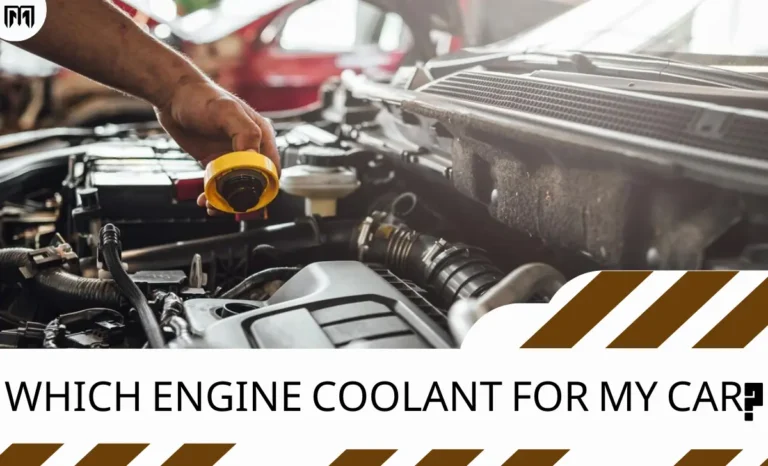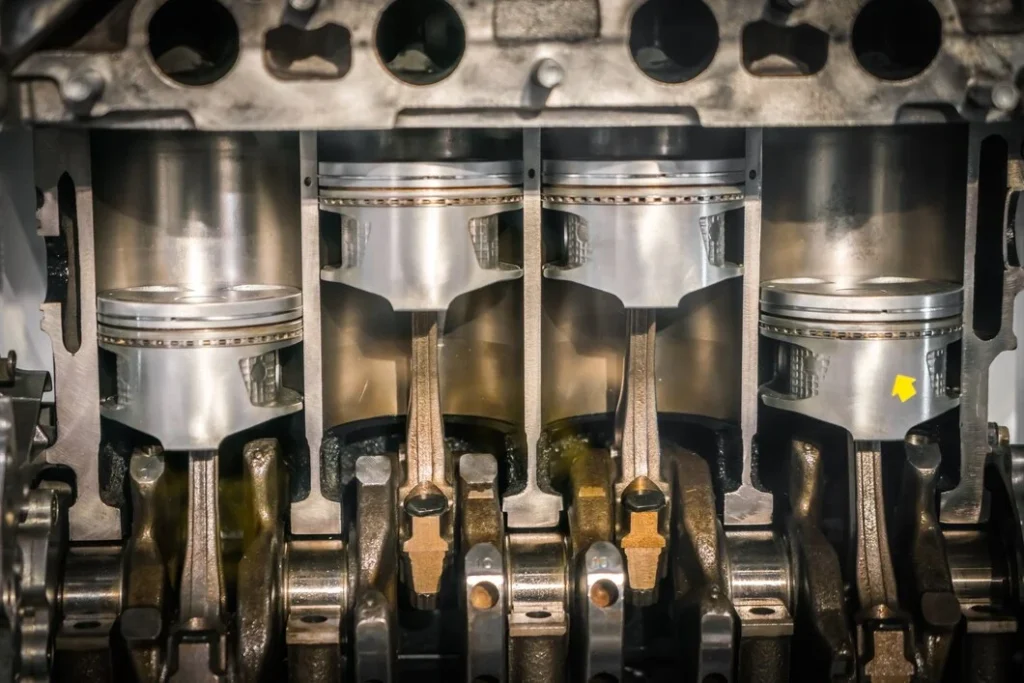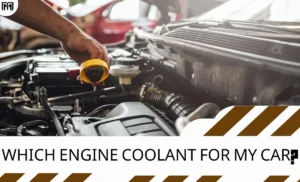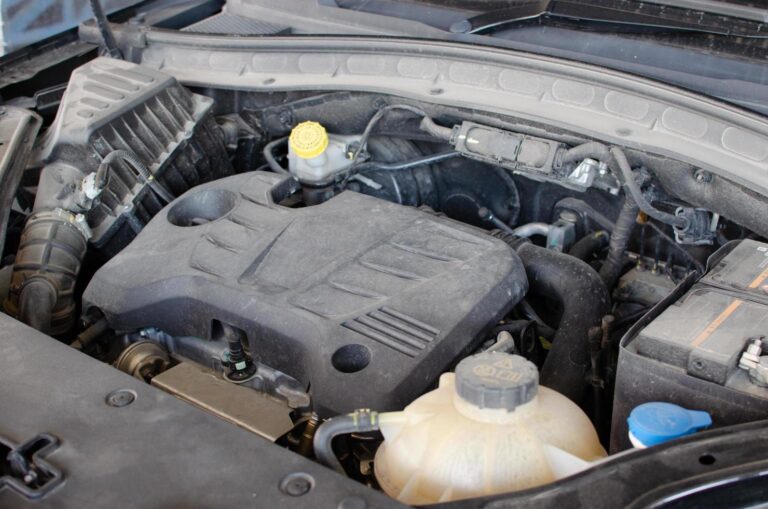
Which engine coolant is best for my car? There are so many coolant oils available on the market that it can be difficult to know which is the best coolant to use in your car. This means a lot of people ignore it when it comes to cooling systems. Maintenance is an important part of being a car owner. By carrying your vehicle, you save money. Many car owners go on regular trips to handle maintenance and get the oil changed. Keep your car running smoothly by performing a few simple tasks at home, like changing the car coolant.
You can change the engine coolant if you perform a coolant flush. Different cars will need different coolants, but every vehicle will need a coolant flush approximately every three to five years, or 50,000–150,000 miles, depending on the manufacturer’s recommendations.
Don’t worry; in this post, we will explain what to know about coolant, how to find it, and what coolant to use in your car.
In this article
- 1 In this article
- 2 What is engine coolant?
- 3 How many types of coolants are there?
- 4 How do I choose the right coolant for my car?
- 5 The Risks of Using Water in Your Car Engine
- 6 Is Nitrite-Free Coolant Better for Modern Engines?
- 7 Coolant Leak Detection Without Pressure Tester
- 8 What’s the Ideal Water-to-Coolant Ratio for My Vehicle?
- 9 How to Check Your Car’s Coolant Level Safely and Effectively
In this article
What is engine coolant?
Engine coolant, also known as antifreeze, is a liquid that flows through your car’s engine and absorbs heat generated during its operation. Although the coolant doesn’t remove all heat from the engine (some heat is expelled through the exhaust), it plays a crucial role in the car’s cooling system. Engine coolant is available in various types, but its primary constituents include ethylene, propylene glycol, and water.
What does engine coolant do?
- Coolant transfers heat and adds antifreeze protection to an engine, allowing your car to run in optimal condition.
- During internal combustion, engines burn fuel, converting part of the energy into heat.
- Some heat leaves through the exhaust, but the rest remains in the engine block.
- Average combustion temperatures can reach up to 2,000°F, and in extreme cases, even 4,500°F.
- To protect the engine and maintain the ideal temperature, engine coolant is used.
How does engine coolant work?

- Car coolant is stored in a reservoir attached to the radiator.
- It circulates through the engine block and its components.
- The liquid cooling system includes:
- The water pump circulates the coolant.
- Radiator: conducts heat away from the coolant.
- Radiator hoses: Connect different parts of the cooling system.
- Fan: Pulls air through the radiator when the vehicle isn’t moving fast enough.
- Thermostat: controls the coolant temperature.
- While the engine runs, coolant continuously circulates through the engine and back to the radiator.
- After cooling, it exits the radiator and re-enters the water pump, absorbing excess heat to regulate engine temperature.
Remember to maintain your car’s coolant levels and follow manufacturer recommendations for optimal performance!
How many types of coolants are there?

There are three main types of coolants commonly used in the automotive industry.
Decide which one you need for your car as a use case.
Organic Acid Technology (OAT):
- Explanation of OAT coolants, their composition, and primary corrosion inhibitors.
- Benefits of OAT coolants include a longer lifespan and reduced reactivity with water minerals.
- Applications and suitability for modern vehicles with aluminum components.
Inorganic Additive Technology (IOAT):
- Description of IOAT coolants, highlighting their use of silicates for corrosion protection.
- Shorter lifespan compared to OAT coolants, and the need for more frequent changes and flushing.
- Traditional blue or green colors to differentiate from OAT coolants.
Hybrid Organic Acid Technology (HOAT):
- Overview of HOAT coolants, combining features of OAT and IOAT formulations.
- Explanation of the organic acid primary corrosion inhibitor along with various inorganic supplements used.
- Versatility and suitability for a wide range of vehicles, especially those with aluminum components.
Importance of selecting the right coolant type based on vehicle requirements and manufacturer recommendations. Emphasis is placed on proper maintenance practices to ensure optimal engine performance, longevity, and protection against corrosion and overheating.
How do I choose the right coolant for my car?

Your vehicle’s owner’s manual is a valuable resource. It provides specific information about the recommended coolant type for your car.
Check the manual to understand the coolant specifications. Coolants come in various colors, such as green, orange, pink, yellow, or purple. Each color corresponds to a different type of coolant.
Tip: If you’re unsure, refer to your owner’s manual or consult a professional.
The Risks of Using Water in Your Car Engine
Pure water is not suggested for use in cars due to issues related to cold-temperature performance and corrosion prevention. Water offers no corrosion protection. To avoid rust on your automobile, apply a protective coating, pressure-wash it periodically, touch up paint chips, and fix any water leaks. To prevent rust during the winter, wash your car regularly, especially after exposure to salt or sand on the road, vacuum the interior, and minimize puddles.
Freezing: In colder areas, the engine’s water can freeze, causing significant damage. Water expands when frozen, and ordinary water in your engine may easily shatter engine blocks and heads, as well as harm water pumps.
Corrosion: What if your automobile never freezes? Coolant also prevents your engine from rusting. While the surface of the engine is often painted, the interior cannot.
Corrosion entering the coolant system can clog radiators and create excessive wear on the water pump.
Is Nitrite-Free Coolant Better for Modern Engines?
Modern coolant technologies have substantially improved engine life and environmental effects. They accomplished this by improving engine protection and reducing the amount of dangerous chemicals seeping into the environment.
Phosphate: Phosphate is a rust-prevention chemical that is often used in Asian-made automobiles such as Honda, Toyota, and Nissan. While phosphate coolants are common in such brands, using them in other brands is unlikely to cause damage. Phosphate improves corrosion prevention and coolant life.
Nitrites: Nitrites were traditionally frequent in older engines, notably diesel. They were not advised for use in aluminum engines owing to probable corrosion difficulties. However, newer nitrite coolants may now be used in current engines, including aluminum ones. They include extra additives to reduce the detrimental impacts on the basic material. Nitrites provide extended service life, particularly in diesel and heavy-duty applications.
Amine, when coupled with nitrites, generates the carcinogenic chemical nitrosamine. This discovery has resulted in the removal of amine from coolants since the 1970s. Coolants usually emphasize the lack of amine as a safety feature.
Borate: Borate is a pH regulator that is commonly found in inorganic coolants. Borate is a helpful additive to inorganic coolants since it may be too acidic. However, organic or hybrid organic coolants do not experience the same pH difficulties. While borate is not regarded as toxic, it is unnecessary to avoid it unless used as an inorganic coolant, in which case it might be advantageous.
Coolant Leak Detection Without Pressure Tester

To detect an engine coolant leak without a pressure tester, you can use a coolant dye test. Here’s how you can perform this test:
- Begin by ensuring that your engine is cold. Remove the radiator cap and take out a small amount of coolant to make space for the dye.
- Add the coolant dye to the radiator, and top off the coolant level with water.
- Start the engine and let it run for at least 15 minutes to circulate the coolant and dye throughout the system.
- Turn off the engine and use a UV flashlight to inspect the engine and surrounding areas for leaks. Coolant leaks will appear as bright green or yellow stains1.
Remember to follow the manufacturer’s instructions for the dye carefully and perform the test in a well-lit area. If you encounter difficulties or are unsure, it’s advisable to seek assistance from a professional mechanic to prevent potential engine damage1.
What’s the Ideal Water-to-Coolant Ratio for My Vehicle?
The ideal water-to-coolant ratio for your vehicle typically ranges around 50:50, meaning a mix of equal parts water and coolant. This ratio provides a good balance between reducing the freezing point and effective cooling.
However, in milder climates where freezing protection is less critical, a lower percentage of antifreeze, such as 20% antifreeze and 80% water, can be sufficient while still providing adequate lubrication for the water pump.
It’s important to consider the climate conditions in your region when determining the optimal water-to-coolant ratio to ensure proper engine protection and cooling efficiency.
Is it okay to mix coolant with tap water?
Even though it’s a common practice, mixing tap water with coolant isn’t advisable. It’s better to use demineralized water with coolant.
This precaution helps avoid any potential chemical reactions between the tap water and the coolant. However, some coolants are formulated with modifiers to accommodate tap water. Always check your coolant brand’s label for specific instructions.
How to Check Your Car’s Coolant Level Safely and Effectively
Warning: When the engine is hot, do not attempt to open any coolant tanks, expansion tanks, or radiator caps. Wait for it to lose its heat. Opening a hot, pressured coolant system can result in severe burns.
The first step is to locate the expansion tank in your car’s engine bay. This is usually a small plastic, translucent bottle with a plastic black or blue cap.
To check the level, observe where the water line is through the side of the bottle, about the maximum and minimum marks. If you’re unsure, consult your car’s owner’s manual.
If the coolant level is below the minimum mark, top up with prediluted coolant to the required amount. It is recommended to fill the bottle halfway between the max and min marks, but check your owner’s manual for exact details.
Remember, always refer to your vehicle’s owner’s manual for specific instructions related to your vehicle. If you’re unsure, it’s best to seek help from a professional mechanic.
Take Action Now! Don’t wait until it’s too late. Regular maintenance, including checking and replacing your coolant, can prevent major issues and save you money in the long run. Start by checking your vehicle’s coolant level today. If you’re unsure about anything, consult your vehicle’s owner’s manual or seek help from a professional mechanic. Remember, taking care of your vehicle ensures a smooth ride and contributes to its longevity. So, stay safe, and enjoy your driving!
In conclusion, we’ve covered a lot of topics about engine coolants. We’ve learned what engine coolant is, what it does, and how it works. We’ve also explored the different types of coolants available, like Organic Acid Technology (OAT), Inorganic Additive Technology (IOAT), and Hybrid Organic Acid Technology (HOAT), and how to choose the right one for your car.
We’ve discussed the risks of using water in your car engine and the benefits of nitrite-free coolant for modern engines. We’ve also provided a guide on how to detect a coolant leak without a pressure tester, the ideal water-to-coolant ratio for your vehicle, and whether it’s okay to mix coolant with tap water.
Lastly, we’ve provided a step-by-step guide on how to check your car’s coolant level safely and effectively.
Remember, proper coolant maintenance is crucial for the longevity of your vehicle. Always refer to your vehicle’s owner’s manual for specific instructions related to your vehicle. If you’re unsure, it’s best to seek help from a professional mechanic.
As a final tip, remember that regular maintenance can prevent major issues down the line. By taking care of your vehicle, you’re not only ensuring a smooth ride but also saving money in the long run. Stay safe and happy driving!




